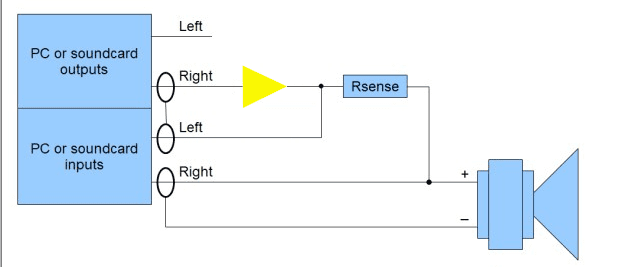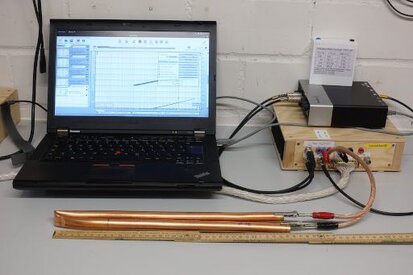brunohydra
Registered
Thread Starter
- Joined
- Oct 28, 2020
- Posts
- 13
Hello.
A few weeks ago I had a problem with the impedance measure, I did a forum thread and the problem was solved.
Now, I did a measure of my speaker and I compared with the manufacture datasheet and the parameters are much different.
Manufacture parameters:

Measured parameters:
TS Parameters file
Room EQ V5.20
Dated: 09/09/2021 02:07:32
From measurement Kaos BASS 1350 15"
Zmin 50.71 ohm
fmin 190 Hz
f3 11369 Hz
Le(f3) 0.375 mH
Motional impedance parameters
R0 299.12 ohm
CMES 1.189.1 uF
L0 5.702 mH
beta 0.0450
omega0 568.2
Blocked impedance parameters
RDC 2.80 ohm
dR 10.00 ohm
Re 50.64 ohm
Leb 80.6 uH
Le 1.811 mH
Rss 100000.0 ohm
Ke 0.1161 S-H
Thiele-Small parameters
fs 60.3 Hz
Qms 134.692
Qes 22.801
Qts 19.500
Fts 3.1
Mms 169.26 g
Cms 0.041 mm/N
Rms 0.476 kg/s
Vas 75.72 litres
Bl 11.931 Tm
Eta 0.07 %
Lp (1W/1m) 80.66 dB
Dd 38.10 cm
Sd 1140.1 cm^2
Added mass measurement: Kaos BASS 1350 15" 63
Added mass 63.000 g
Air temperature 20.0 C
Air pressure 1010.00 mB
Air density 1.2002 kg/m^3
Speed of sound 343.2 m/s
How my impedance measure is configured:




My question is:
Can I measure a 15" speaker with a soundcard?
If yes, what do I need to do to make this measure reliable?
Link of another post:
AVNIRVANA /threads/wrong-parameters-measured.9029/#post-70002
A few weeks ago I had a problem with the impedance measure, I did a forum thread and the problem was solved.
Now, I did a measure of my speaker and I compared with the manufacture datasheet and the parameters are much different.
Manufacture parameters:
Measured parameters:
TS Parameters file
Room EQ V5.20
Dated: 09/09/2021 02:07:32
From measurement Kaos BASS 1350 15"
Zmin 50.71 ohm
fmin 190 Hz
f3 11369 Hz
Le(f3) 0.375 mH
Motional impedance parameters
R0 299.12 ohm
CMES 1.189.1 uF
L0 5.702 mH
beta 0.0450
omega0 568.2
Blocked impedance parameters
RDC 2.80 ohm
dR 10.00 ohm
Re 50.64 ohm
Leb 80.6 uH
Le 1.811 mH
Rss 100000.0 ohm
Ke 0.1161 S-H
Thiele-Small parameters
fs 60.3 Hz
Qms 134.692
Qes 22.801
Qts 19.500
Fts 3.1
Mms 169.26 g
Cms 0.041 mm/N
Rms 0.476 kg/s
Vas 75.72 litres
Bl 11.931 Tm
Eta 0.07 %
Lp (1W/1m) 80.66 dB
Dd 38.10 cm
Sd 1140.1 cm^2
Added mass measurement: Kaos BASS 1350 15" 63
Added mass 63.000 g
Air temperature 20.0 C
Air pressure 1010.00 mB
Air density 1.2002 kg/m^3
Speed of sound 343.2 m/s
How my impedance measure is configured:
My question is:
Can I measure a 15" speaker with a soundcard?
If yes, what do I need to do to make this measure reliable?
Link of another post:
AVNIRVANA /threads/wrong-parameters-measured.9029/#post-70002
















